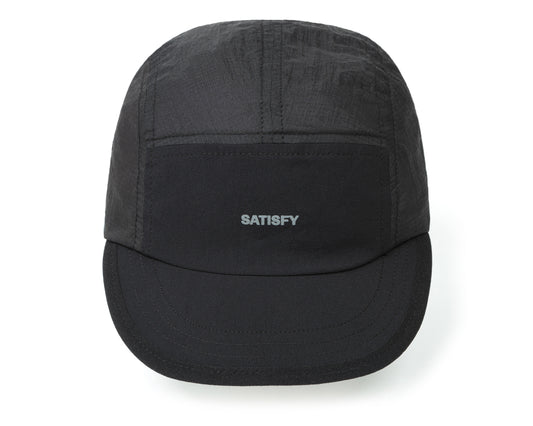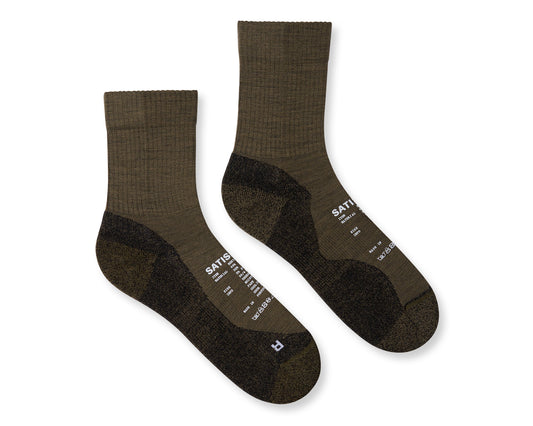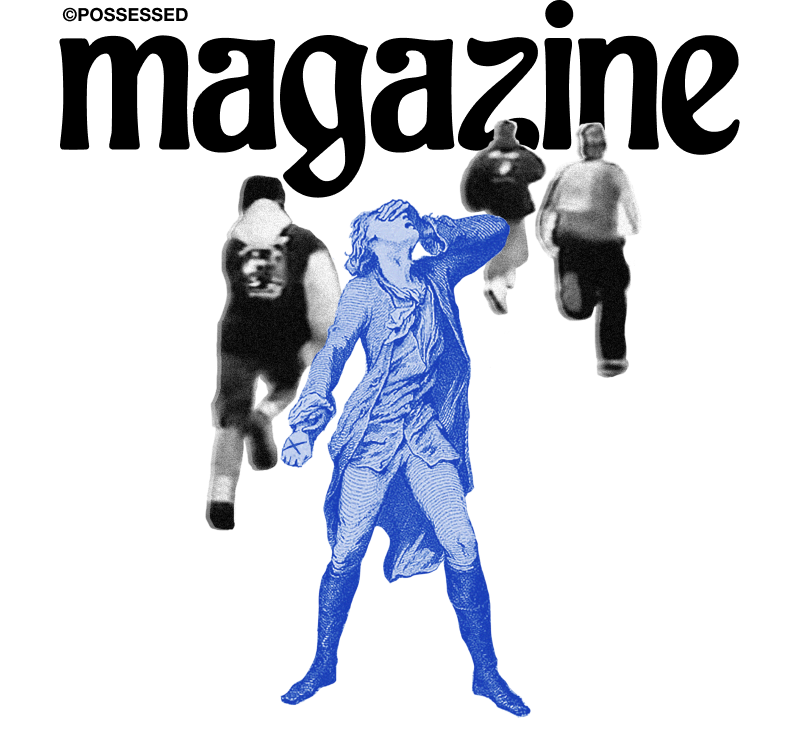

Editor-in-Chief: Ian F. Svenonius
Artwork and Layout: Jaakko Suomalainen
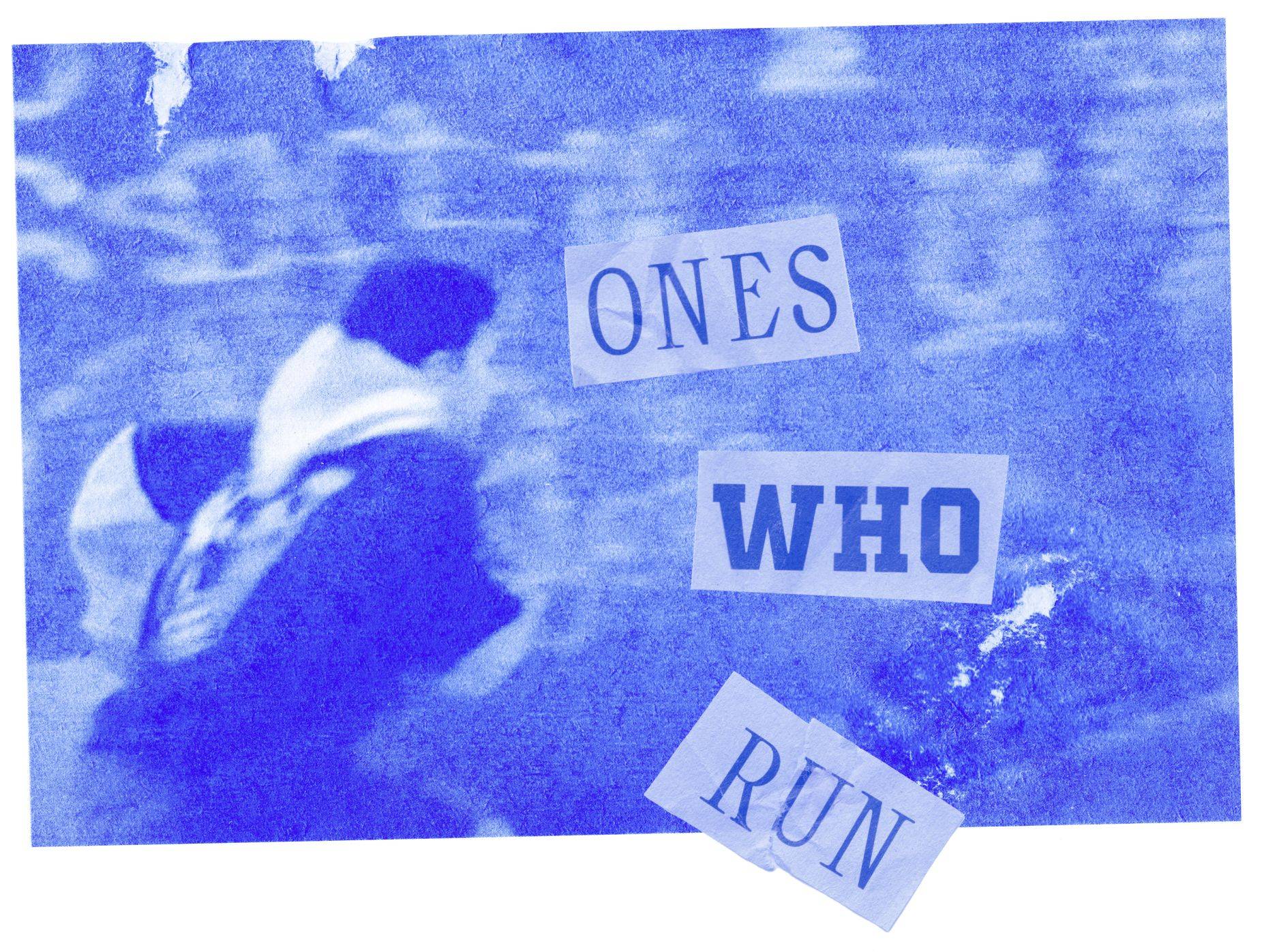
PEOPLE WHO RUN
WHY THEY RUN?
WHAT DOES RUNNING DO TO YOU?
WHY DO YOU RUN?
WHEN DID YOU BEGIN TO RUN?
WHY DO YOU RUN?
WHAT ARE YOU RUNNING FROM?
When did running become a sport?
Running was once what people did, like eating, breathing, sleeping, and thinking.
Running was once life itself.
Running was how people moved and survived.
One ran to the tree to pick a fruit. One ran down one’s prey. One ran from danger. One ran to and fro. Running was how mankind migrated across the steppe. Marathon was an example of battle based on running; the victors were those who ran the furthest and fastest. Not only was running a necessary component of survival, it was also fun, and provided a rush of satisfaction.
Ancient man was on a perpetual “runner’s high”.
Mercury (neé Hermes) was a favorite ancient deity, "the God of Running".
However, with the industrial revolution, and the internal combustion engine, running became passé.
It was looked at as primitive, degenerate, and in poor taste.
Runners were shamed, ridiculed, and forbidden from running.
Sometime they were even imprisoned.
Eventually, once the automobile became absolutely paradigmatic, and running was no longer a threat to automobile manufacturers, running crept back into public consciousness and was revived as a fashion, pastime, hobby, or sport. Running became a bourgeois affect and was even considered, in elite circles, to be a mark of status or sophistication. Still, for many, the stigma remains. Even now, many are loathe to be seen running lest it seem incongruous with their projected image or with societal decorum. Running feels vulnerable.
Running against
the virtual commodification
of everyday life.
Many are, because of the mechanical propaganda machine, actually incapable of running. Meanwhile, driving –the ultimate expression of alienation– is enforced.
First we were forced from our feet by the institutionalization of the car and the paved highway.
Because of the car, man is displaced.
He now lives in his head.
Individualism and the separation of man from his peers and his environment is just one aspect of industrialization; the alienation of man from the space he resides in.
Computers were the next step.
In fact, the move from the “interstate” to the “internet” was seamless.
How did we get to this juncture? Where running is aberrant and driving is the norm?
We enjoy driving of course and appreciate a game of chicken at dead man’s curve or a night out at a smash-up derby; cars have enriched our lives in myriad ways.
But what have they taken away?
Integration with one’s environment.
“Someone has to stand up against this insidious alienation” the people cried, as they switched the channel and stared at their phone.
Miraculously someone did.
They started running. Running against the technological / digital monolith.
Running against the virtual commodification of everyday life.
Running is the resistance to that alienation.
Hermes, long in exile, is making his return. He has a copy of Possessed in his hand. He spreads the good news of running and action in this brisk periodical. Hermes is the “psycho pomp,” the conveyor of souls from the upper and underworlds. He was the running god and was a patron of commerce and initiation. Possessed is a messenger too. Each month we will bring the message as it pertains to our fellow runners, sometimes it will explicitly pertain to running, sometimes not but we promise it will always be fun, unexpected, and light enough to be read as one jogs across the mew, liberated from the confines of the screens and the machines.
In this issue of Possessed, we interview a sect of hardcore runners from the “straight edge” hardcore scene whose lifestyle ethos includes running.

The Marathon Boy or Ephebe of Marathon is a Greek bronze sculpture found in the Aegean Sea in the bay of Marathon in 1925.

As it pertains to Straight Edge and Running.
“Context is everything” or so they says. In this issue, we’ll be talking specifically about straight edge hardcore, the Romantic movement, and of course running. The following timeline will help explain the topics of the magazine in historical context for reader.
1171 BC
Tailteen running games in Ireland.
1,000 BC
The myth of Hermes emerges; the fact that there is this “God of Running” reveals that running was a venerable activity for the ancients.
776 BC
The Olympic Games feature running as a sport.
490 BC – Marathon
Mythic battle wherein victory went to the best runners, and Athens was saved by the feat of extraordinary running.
1620 – Descartes
The Enlightenment, mind/body duality, etc.
1790-1820 – Romanticism
Typified by poets and painters, exalts the natural world in reaction to industrialization.
1900 – Wandervogel
Wandervogel movement in Germany and Bohemia proposes running through the woods as a pastime; a continuation of Romanticism.
1951
“Rocket 88” first rock ’n’ roll song recorded.
1981
"Straight Edge" song by Minor Threat recorded.
1985
Youth Crew/ Youth of Today movement begins, inspired by Straight Edge song.
2019?
Polish straight edge running movement.
2022
Possessed Magazine reports on the phenomenon.
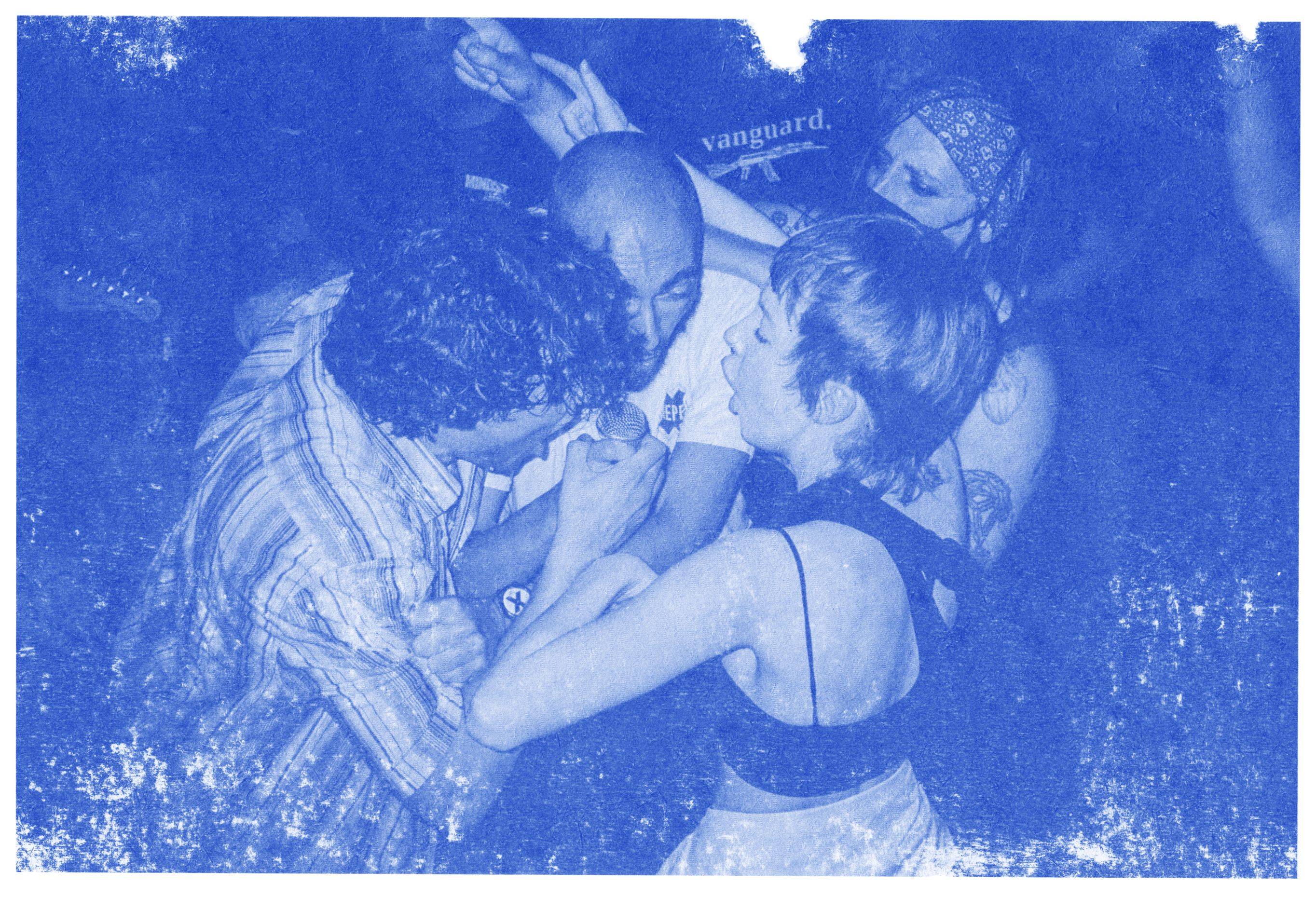
Protein ©Alinele Grotesque

Report on a Straight Edge Running Club: “YOUTH 2 YOUTH”
In the news recently are reports of a running club...of an ideological nature.
The running club which is causing all of the hullabaloo, located in Poland, is an exclusive organization being made up entirely of “straight edge” punks. If one is not “straight edge”, one may not join. This has roiled the running community and there are fears, among some, in regards to the implications of such a club.
“Straight edge” of course is the abstinence movement in punk. No drinking, no drugging, no loose sex, and no “obsessive” behavior as the members define it. Often, depending on the sect, veganism is a tenet. This flies in the face of the average runner who is a bit of a party animal and whose running is held up as a way of balancing out the excesses he or she might enjoy at the bar or the club.
In fact, there are fears, in the decidedly non ideological running community, that this trend toward abstinence of drugs and alcohol might become widespread and that the camaraderie enjoyed after hours by men and women in the running scene will be fractured.
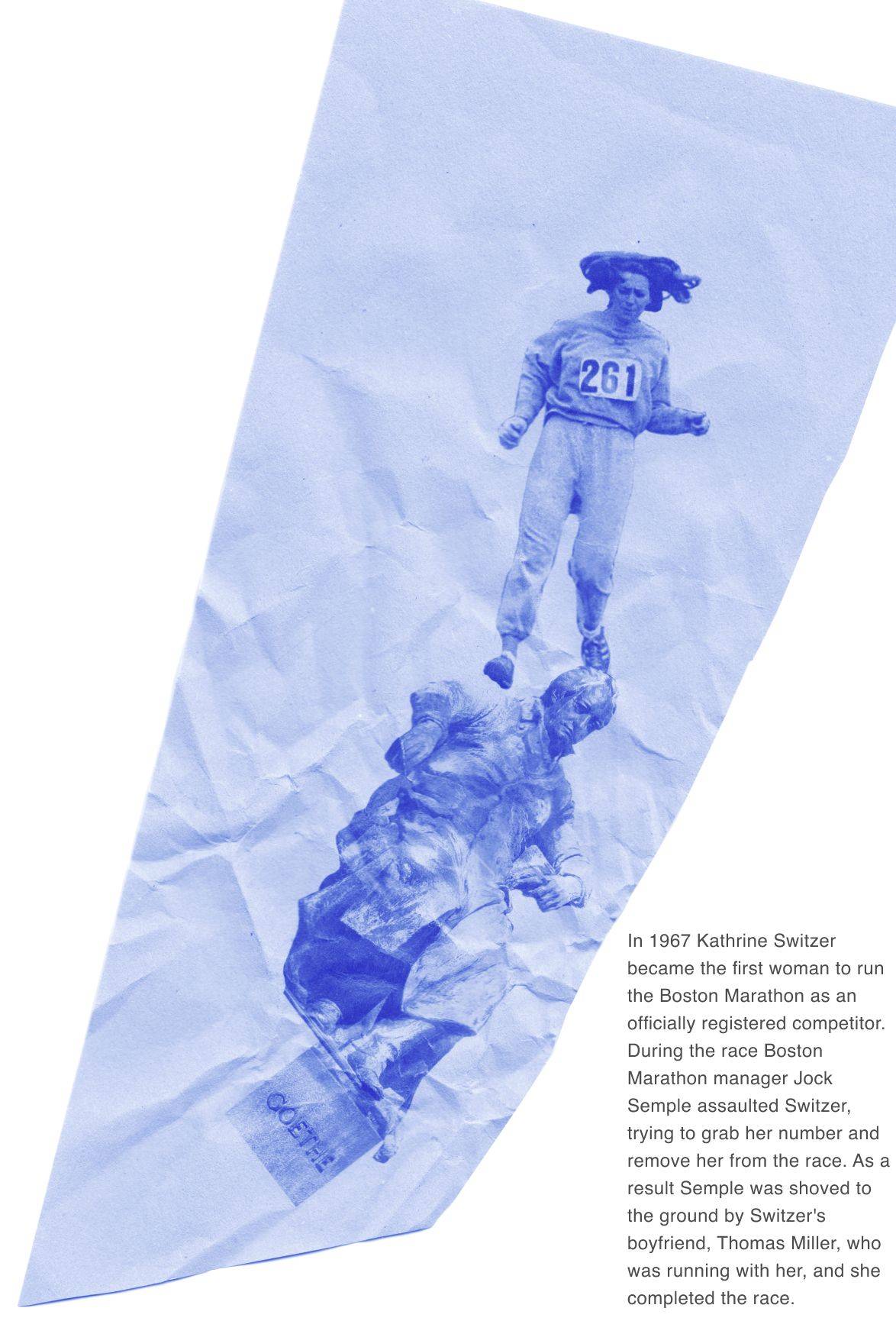
However, we can assure any wrinkle browed runners, scared that their lifestyle is threatened, that such fears are misplaced. The characterization of straight edgers as having a complex of moral superiority, the idea of a priesthood of punk rockers who violently police their peers, has always been a great fallacy.
Straight edgers are, in fact, decidedly non judgmental, enjoying an idealistic naif’s view of the world, akin to that of a Tibetan monk perhaps. Psychologist’s might say the impulse for straight edge comes from the adherent’s refusal to comply with the expectations of adulthood as prescribed by the consumer culture. Straight edge is a refutation of the requirements of the codes that are synonymous with sexual and corporate conformity. Straight edgers running on the track makes perfect sense then; if straight edge is a rejection of adulthood, who runs more than children? Children run everywhere. Adults only run intentionally out of desperation, to catch a bus. Or, perhaps, as part of an expensive International sports events. Running for an adult is therefore an embodiment of the “Peter Pan Complex.”

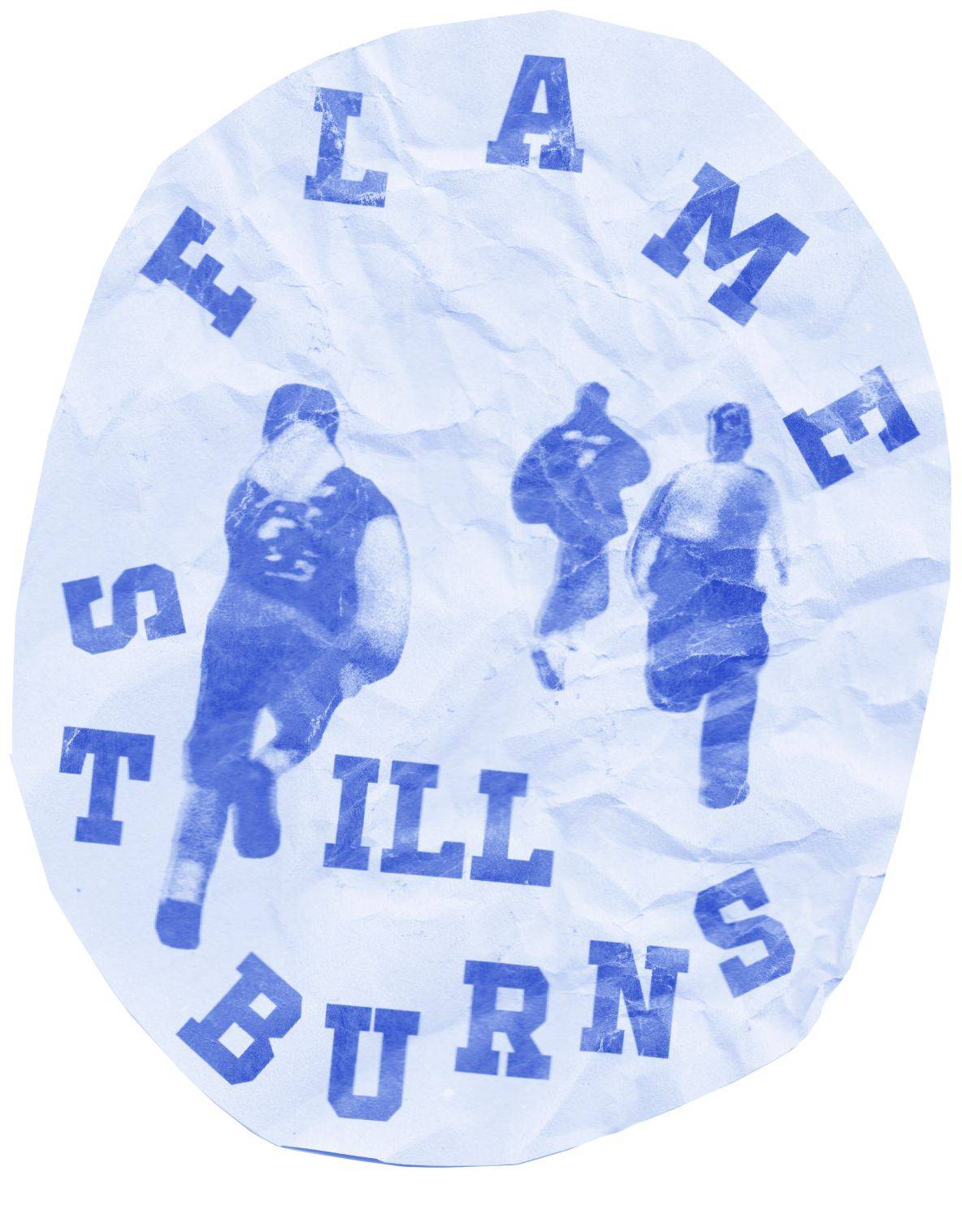
WHAT IS
STRAIGHT EDGE?
“Straight edge” is a lifestyle / ideology based on a song by the hardcore punk group Minor Threat that can be defined essentially as an abstinence ethos; a disavowal of alcohol, drugs and –for some– casual sex. Its adherents see straight edge as a counter-cultural, anti corporate movement, rooted in punk rock, whose ideologues eschew the rituals of adulthood, rebelling against the mandated keg swilling, pill popping, and facile erotic obsessions encouraged of the young adult.
Straight edge as music was entirely about energy; the manifestation of youthful vigor which wasn’t channeled into alcohol binges, dating, or the sanctioned rebellion of drug taking. The straight edge devotee wasn’t doped, high, blotto, or lovelorn. They hadn’t been sedated.
Therefore they had to work out their excess “chi” energy. The manifestation of this release was loud music and vigorous dancing. There was always a spiritual aspect to straight edge as well, as with any ideology which insists on eschewing earthly delight and immediate gratification for a higher moral reward.
Though straight edge never referred to a higher power or a celestial reward for abstinence, the concept of deferred reward insinuates otherwise, even if its unconscious.

The acolytes of the movement are often painted as “monks” by their detractors, of which there are, not surprisingly, many. People take it quite personally if you choose not to drink. They feel judged, they feel insulted, they feel dirty and weak. But straight edge people never announce such ideas. That’s never been the point. The straight edge ethic was always a way to sidestep social pressure for those who aren’t comfortable with the status quo; maybe an instinctive abstention by some who are not physically equipped for drugs and or alcohol.
As straight edge goes into its 40th year, the culture shows no sign of disappearing and it’s taken new paths of expression. Of interest to us is the devotion to rock ’n’ roll running by Polish members of the straight edge tribe profiled in these pages.
During the pandemic, the music stopped and mutated. And the pulsing energy of these bodies untainted by junk, smack, dope, or alcohol had to let loose somewhere.
It’s an easy transition from skanking to jogging and that’s exactly what’s occurred. Instead of pounding heads, these punks are pounding the pavement in 5k, 10k, and marathon jaunts that have left the “pit” at the punk club desolate.
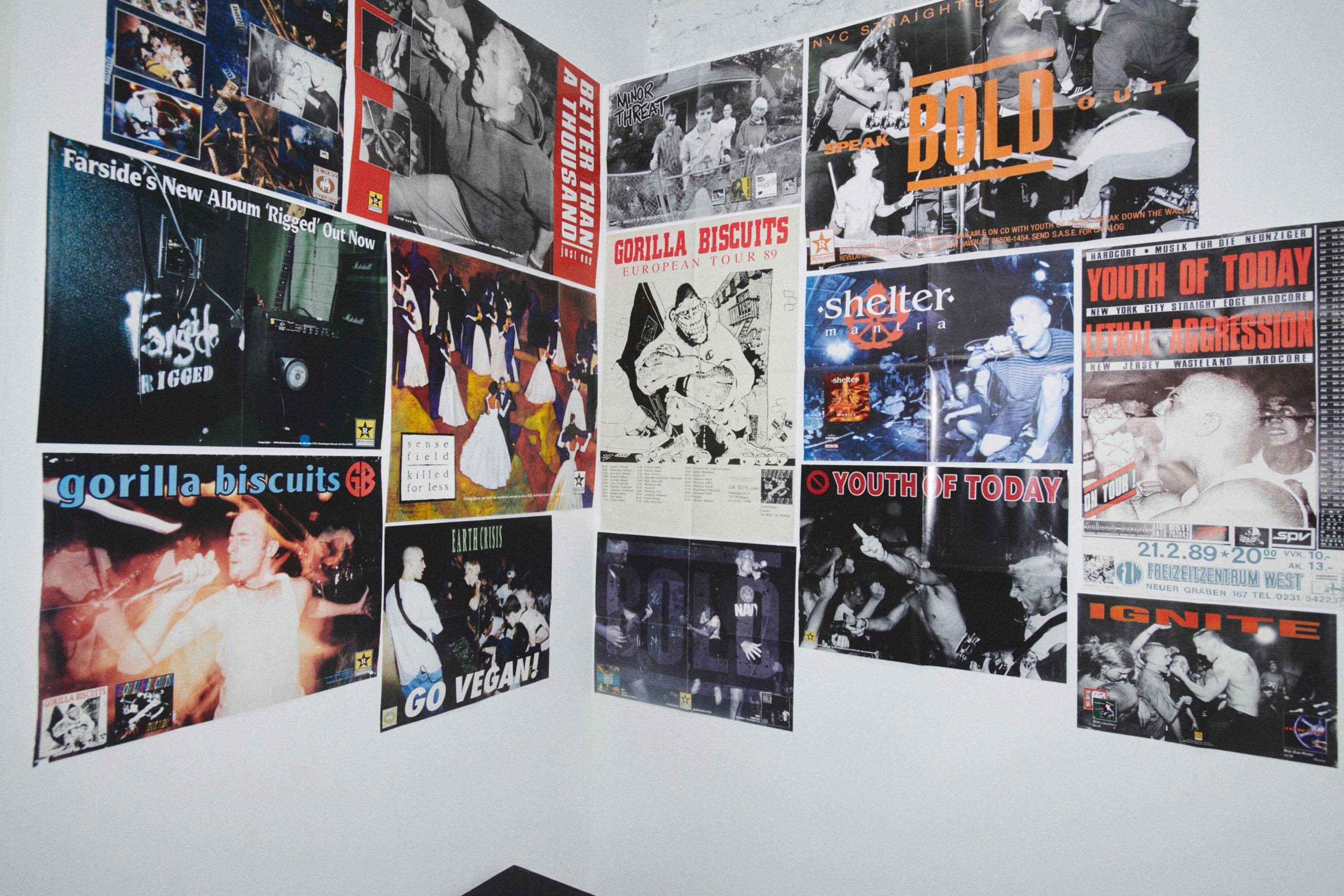
HC Sticker Threat II Exhibition ©Yves Mourtada

Just Say No to the Runner’s High
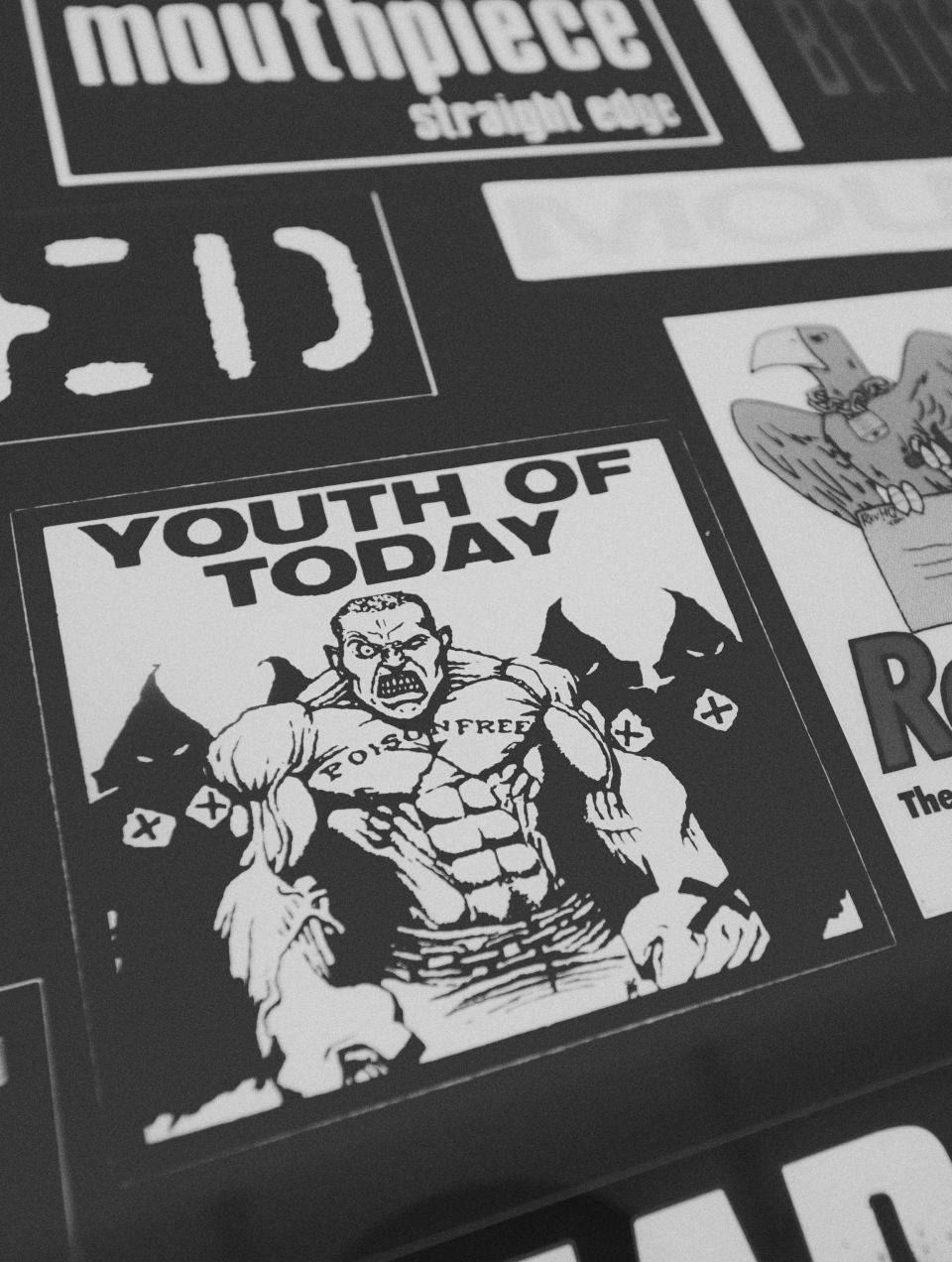
HC Sticker Threat II Exhibition ©Yves Mourtada
Why do people run? For some, it’s exercise. For others, an occasion to meditate or sort out their thoughts. Some embrace it as a simple excuse to be outdoors. Indeed, there are many reasons for running that are perfectly respectable. But for some, running is a morally ambiguous –and even sinister– undertaking.
Yes, alongside the “good” and genteel runners who comprise the great majority of the running population, there are also low elements of society who have infiltrated the ranks, derelict specimens who run for a sort of sensual “rush” which they call a “runner’s high.”
These characters are sometimes hard to spot. As a matter of fact, you might unwittingly run alongside some of them each day during your daily jog. These pleasure seeking sickos are adept at blending in with normal runners, and are often indistinct from them, though —we stress— their values and goals couldn’t be more different. For, while the good runner strives for cardio health, a clean mind, and muscular excellence, the junky-runner sprints moth-like into oblivion. Running only for the moment they are released from the leash of reality when that sensual endorphin rush –aka the “runner’s high”– kicks in.

HC Sticker Threat II Exhibition ©Yves Mourtada
While most drugs are harvested from poppy fields, cultivated with grow lamps, or cooked up in laboratories, this sort of fix can only be scored through the act of running. The irony is, of course, sublime. Though many runners become hooked inadvertently, running is now hawked to the drug addict community by dealers and Timothy Leary style drug evangelists as another “kick” they have to try once they’ve tired of the rest.
Yes, drug fiends will be induced to run by fitness-junky guru types who tout the potency of this jog induced state of intoxicated nirvana.
These lost souls are in search of a state of manic exhilaration and a release from the concerns of life. They run to escape; to be free from some version of reality.
An escapist trance envelops them. But it only lasts for a few moments. After this comes the dreaded “come down.” Which would be fine, if it were an isolated incident. But unfortunately it’s not; once achieved, this condition becomes a habit. These degenerates run again and again in search of this “high.” They become junkies, with running a socially sanctioned cover for their derelict “lifestyle.”
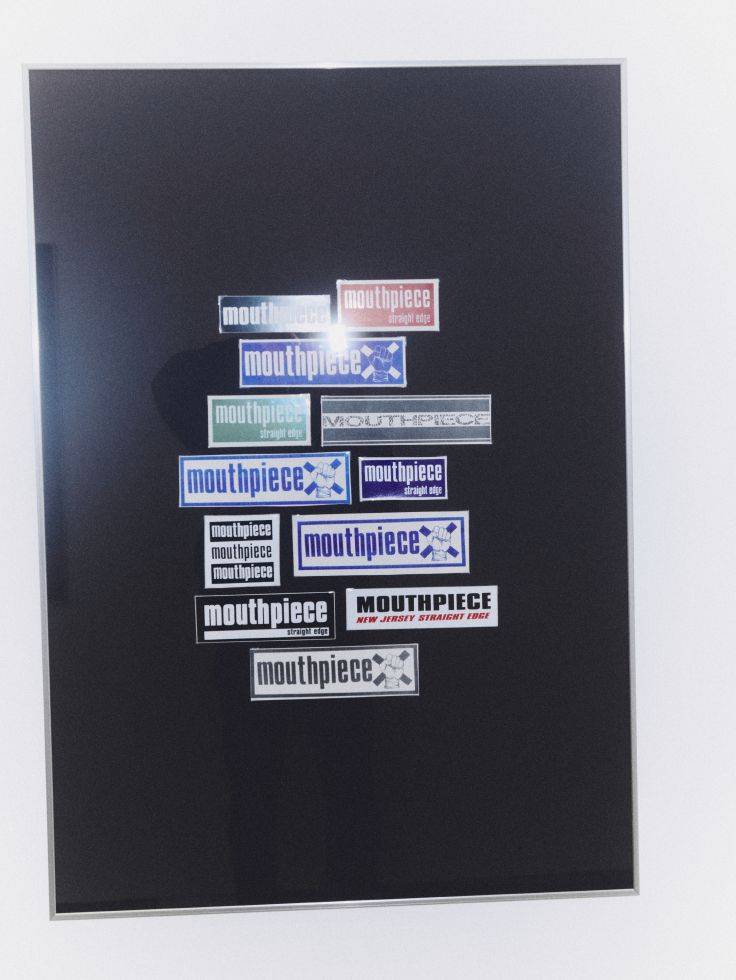
HC Sticker Threat II Exhibition ©Yves Mourtada
Even respectable runners have accidentally slipped into this kind of state. Completely by chance, well-meaning runners have inadvertently gotten high by mistake.
It’s a danger we all face and we all must use our will and our strength to resist. But how can we know if the high is coming our way? In fact, how can one be sure of not getting “fucked up”? Can one run and yet resist the endorphin rush of the running high?
Some runners run on drugs; acid, mushrooms, special K, DMT, speed and its pharmaceutically prescribed relatives. There are also, of course, drunks on the track. Drunks running the paths wasted on gin & tonic, whiskey & vodka, beer & wine. All of these states of intoxication are commonplace, but when blended with the endorphin rush of the runner’s high, there can be big problems. This trend toward ‘spiking’ whatever narcotic contraband with the added intoxication of the runner’s high is commonplace and a real problem for the community on the track.
It’s up to all of us to say “no” to the runner’s high.

HC Sticker Threat II Exhibition ©Yves Mourtada
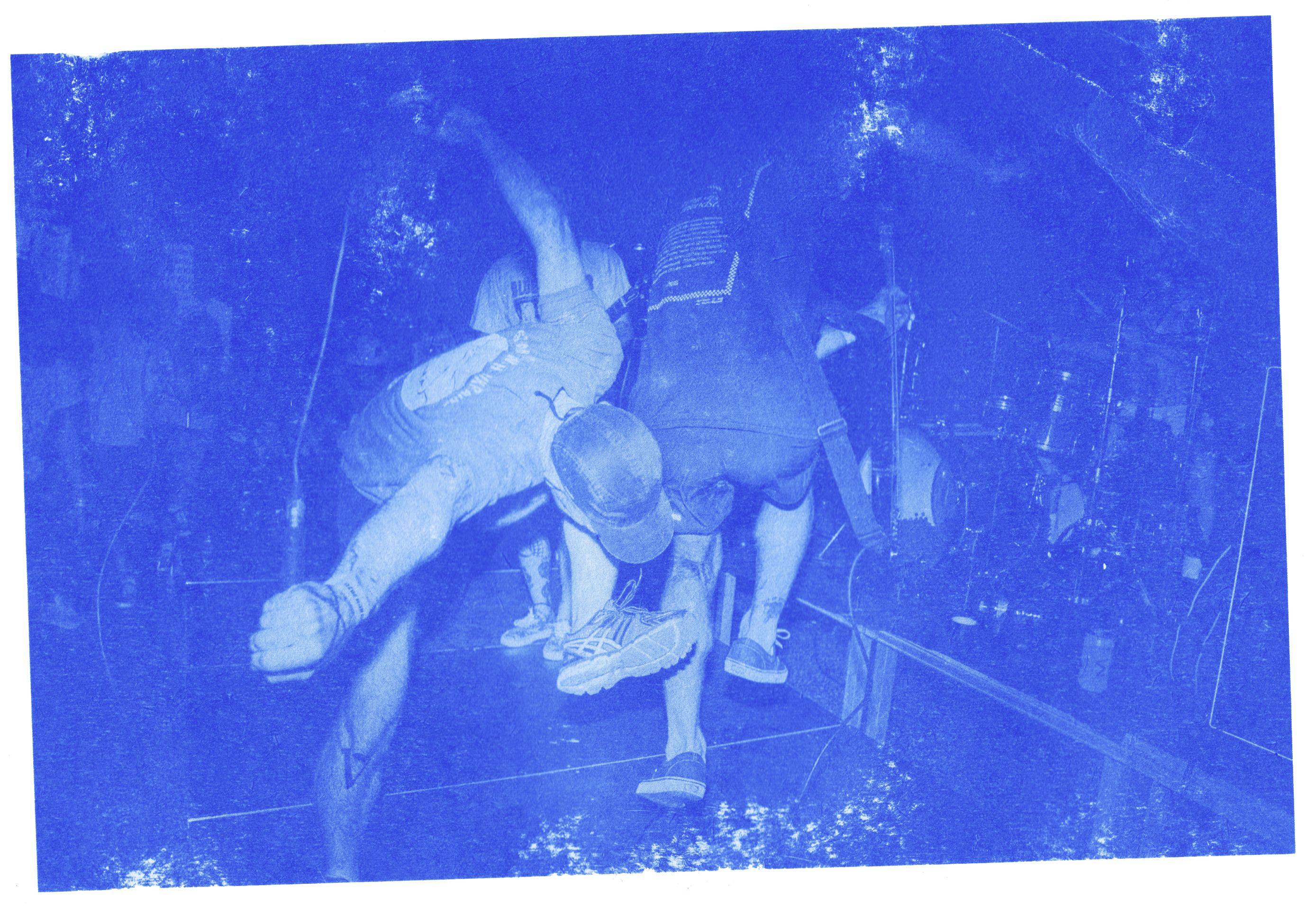
Protein ©Andreas Bartelmess

The trauma of the Industrial Revolution in the 19th Century was total; the world was turned on its head as traditions were demolished and every belief, skill, craft, and practice was made obsolete by the new technology.
Opposition to the machine age and its enlightenment heralds took shape in the form of Sturm und Drang and the ideology it precipitated: Romanticism. These were artistic, ideological, and aesthetic movements which celebrated the heroic individual as child, champion, and steward of nature.
Defying the rationalism of the enlightenment, the Romantics exalted emotion and the relationship with the sublime, particularly the sublime nature of love and the natural world. It was a mystical urge, a revival of idealism and medievalism, a shaken fist to defy the dehumanization mandated by the capitalist’s transformation of the world into a machine.
Nature became, perhaps for the first time, something to be amazed by, appreciated, worshipped. Mankind for the first time saw nature as something “other” and awesome; they had been cast out of paradise and now looked enviably in.
Painters depicted the majesty of the natural world while youth groups delighted in wandering through the woods. In Germany, the “Wandervogel” (“wandering birds”) movement began, youth groups who hiked together, recited poetry, debated, sang songs and celebrated adventure. Some of these groups explicitly rejected alcohol and tobacco in the quest for a pure and healthy lifestyle. The wandervogel thrived through the late 19th and early twentieth centuries until they were outlawed when the Nazis took power in 1933.
Our world is now going through a trauma even more profound than the industrial revolution, with digital technology wrecking every assumption, making every skill redundant, and erasing entire industries overnight. And Silicon Valley isn’t satisfied; they insist that all interactions –ordering food, meeting up for a date, buying a movie ticket, et al.— go through some app or another. They insist that work meetings, rock concerts, erotic encounters, and every other traditionally in-person and/or communal pastime be “virtual.”
Though humanity has been extraordinarily passive and accepting of this radical computer control paradigm, a reaction of some sort is inevitable. Its no surprise then that more and more young people are looking to the outdoors for an escape from the screen. Running and running groups, though certainly not new, are more popular than ever.
In Poland, a corollary to the “Wandervogel” has emerged, a “straight edge” punk club of running enthusiasts. Based around a straight edge punk band and record label, young teetotaler punk rockers have formed a running club as an extension of their straight edge ethos. The “Youth 2 Youth” crew, from Krakow, Poland, not only run in their home town but also bring their sneakers on tour. When they’re not playing or driving from show to show, they’re running and recruiting like-minded running enthusiasts they encounter. Though they are not consciously emulating the “Wandervogel,” their aims are vaguely similar; a conscious lifestyle with an emphasis on healthy living, building a community of non-conformists, and achieving a commune with nature. A romantic mindset of chivalry, idealism, and nobility.
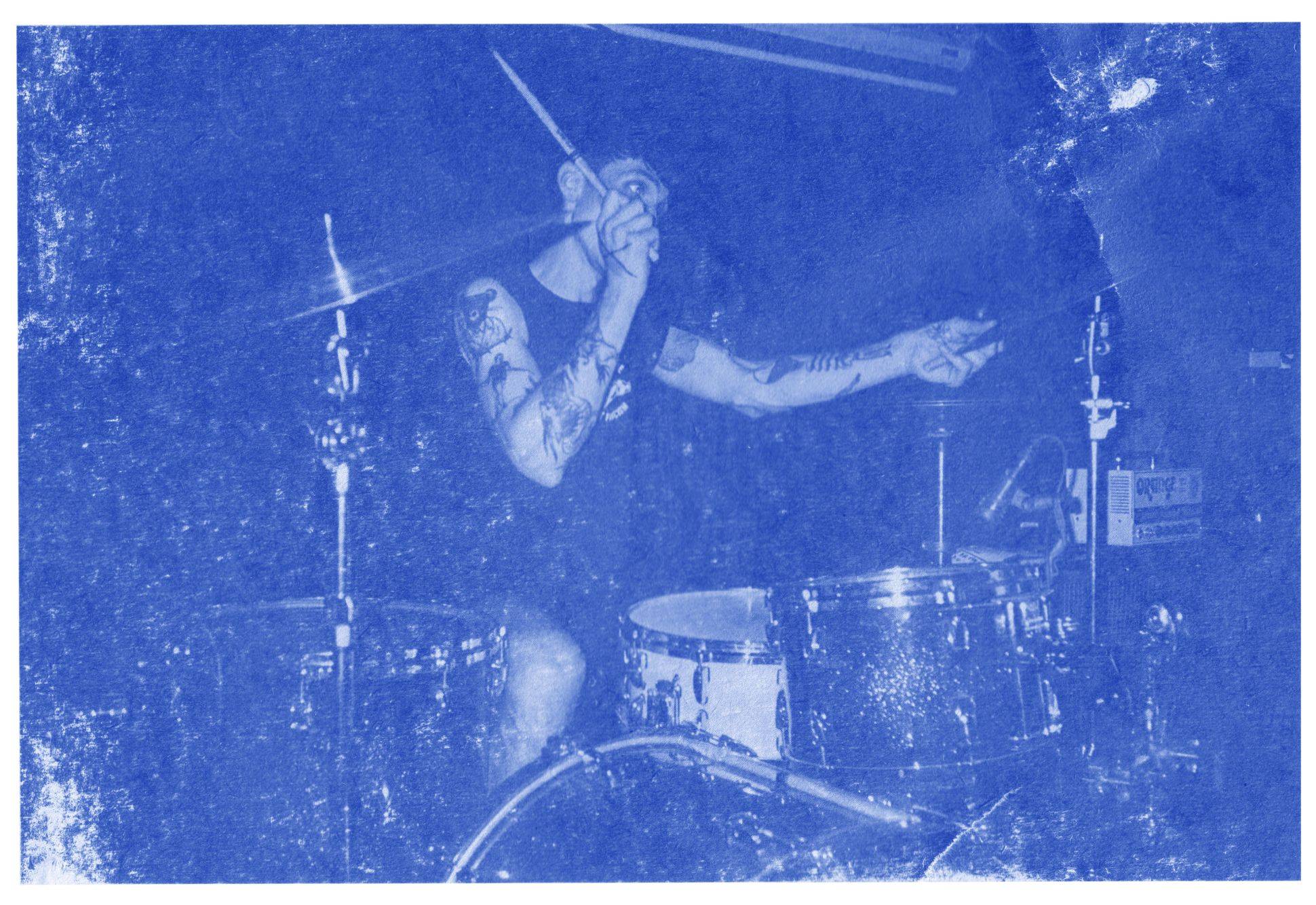
Protein ©Alinele Grotesque
While it seems strange for a music group to have a sports connection, hardcore has always been a physical movement, particularly its “straight edge” variant.
Indeed, the straight edge movement, which started with the Minor Threat song “Straight Edge” in 1981, has always been typified by imagery of heroes undergoing tests of strength (a person leaping with a guitar for example). Straight edge and hardcore bands are typically shown in mid air, grimacing, covered in sweat and often struggling atop a horde of exultant slam dancers. The straight edge groups would have fit in well with Goethe & Byron’s Romantic poetry with its emphasis on oversized emotions and heroic deeds. Straight edge even turned into a movement called “emo” typified by its emphasis on doomed romanticism and emotion.
The straight edge running club in Poland developed organically around a record label (Youth 2 Youth) and its main group Protein. Mac, the head of the label and a group member of Protein explains:
“All of us lived in different cities in Poland. We're all dispersed throughout the country. So when we meet for rehearsal or to play a show or a weekender tour, we try to squeeze the most of it. And as running is important part of lives of couple of people in Protein and Youth 2 Youth, we kind of connected those two. And I think it pinnacled during our last tour in May 2022; during that tour we knew that we'll be in some really picturesque places and it's always a great way to explore either the city or the local surrounding trails and everything. So we took this kind of approach that we'll try to run in every city, or at least every second city that we play with.”
Seems like an ambitious task to run regularly while on tour.
Well, to be honest, it wasn't a task. It was a fun commitment. And I think one of the coolest things that came from that was that it also helped us or allowed us to connect with people from those cities that we played with that happened to be running for some reason. And some of those people were really into running somewhere, doing casual runs, so we weren't really following a certain training routine or anything. We were just having fun and spending time together within our group, but also getting to learn from and getting to meet more people who came to our shows and wanted to join for a run.
Is running similar for you to playing a show?
Your spirit is lifted up and you're also physically drained. That's kind of a weird combination that makes you a happy person. Makes you feel fulfilled maybe, it's better way to say it.
Is running, for the group; more about exercise or is it more about being in nature and in the world?
On the occasion that we meet, it's more about being in the world, being together, making the most of our time, I would say. It's more like that. Of course, all of us would have some ambitions and plans for the races or for competing in any other way. And there are a couple of us who do more of a trail running and run in the mountains. This year, I'm mostly running flat, but I used to do some ultra races last year. But when we meet, it's mostly community-oriented and togetherness, I would coin that term.
I always thought “straight edge” was very American, with our puritan roots and was surprised when it caught on in Europe.
I think the straight edge movement in Europe took a slightly different direction. I'm not a straight edge historian, but to me what always made European straight edge community, or movement, different from U.S. that it was always packed with some other values or other ways of engaging into being against the norms of the society.
So in Europe, I think straight edge, especially in the very early days was really very strongly connected with animal rights and veganism, vegetarianism, that's one thing.
What are the values that it embodies for you?
Well, for sure the core value for me is having that open, helpful attitude towards each other. That's something that I value the most. The thing that is a natural extension of that value, is expecting nothing from others but still being kind, being kind to others with zero expectations that you will receive something back. So this is again, something that is...I would say, these days is something that is special.
And then of course that value that is, I think, super unique to hardcore is having this critique of certain things. I know consumerism, and animal rights abuse, whatever... But also kind of funneling or channeling that critique or that outrage towards something positive. So making use of that rage to make a change. So that's something that I think is also what I've learned and what I'm trying to live by.
I always considered hardcore to be remarkable for its economy and the fact that almost none of the bands has any ambition to be rich or famous.
Yeah and I would totally agree with that and to me, one thing is, again, keeping that community...underground but at the same time available or open to people who are not always having enough money to enter the show. So for example, we have this strategy that everyone under 18 gets in for free when we organize shows. So we always try to keep it accessible to anyone or, if there's a need to support a certain cause, there's always a benefit. So that's one thing.
On the other hand, again, I can say maybe for myself and for my friends, that people who grew from hardcore, are into hardcore still...have this, I would say, almost an organic or very internalized critique towards general consumerism. Like on your daily choices, you select the products that are always more ethical, less harming to environment or to people, so that's what you learn, I think that's what you can learn from hardcore punk and apply that to your daily life. Because as you said, I think that's getting harder and harder in today's world to walk the talk. So if you're, against certain forms of consumerism, what you do in your daily life, and we are surrounded by a capitalistic world.
And I have to say that I have to accept that, that's not going to change probably in a short period of time and that's the system that we're living. And that's my personal opinion. I'm always thinking about the ways that I can tweak the system or change the system to be less filthy. Or what can I produce or what can I give to contribute a bit to making the world a better place. You can say, so yeah.
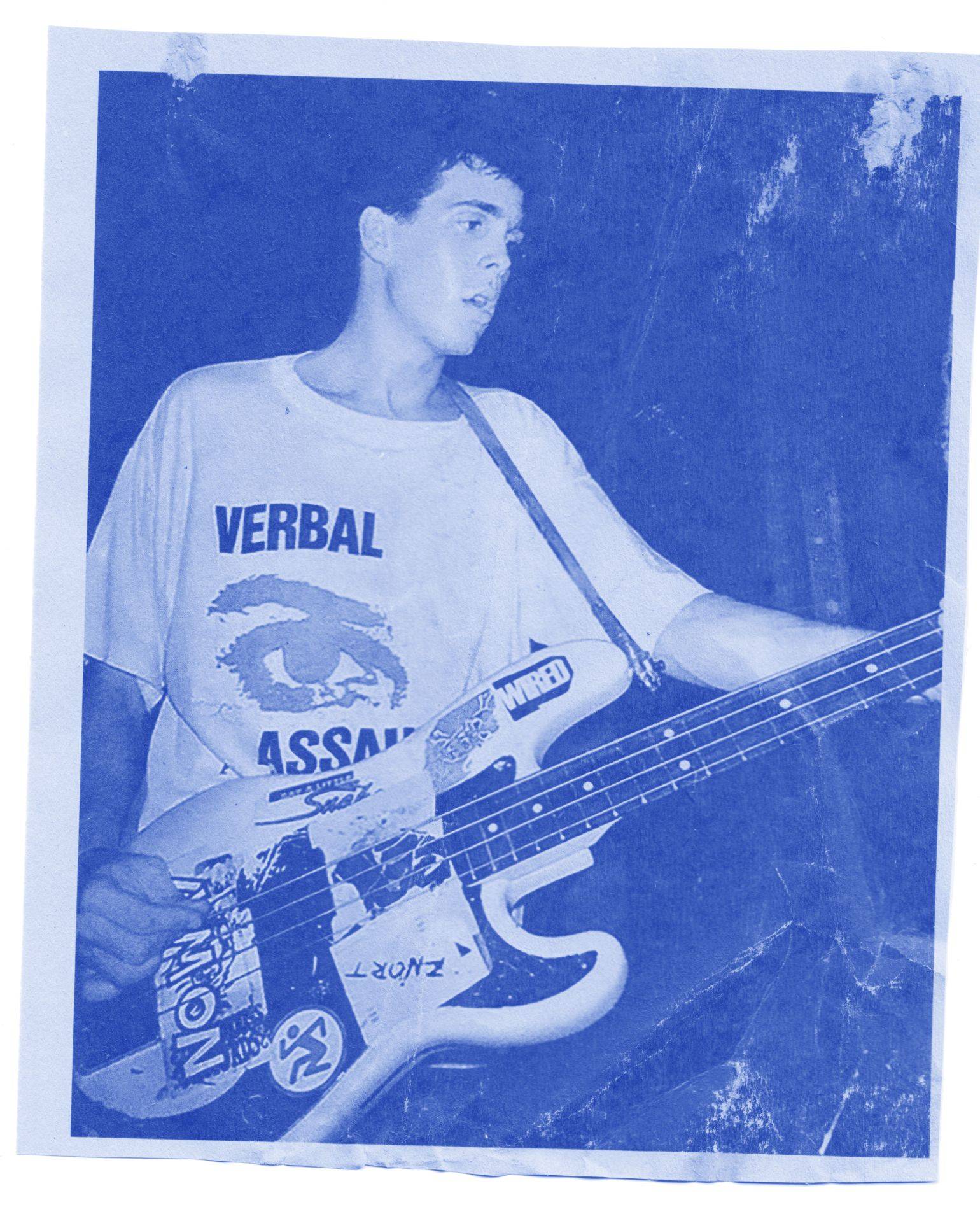
Walter Schreifels of Youth Of Today ©Andreas Bartelmess

The phenomenon of straight edge of course began in the USA in Washington, DC with Ian Mackaye and Minor Threat who wrote the song “Straight Edge” in 1981 which proposed a new tribal identity of teetotaler rebel punks. The concept was revived in the mid ‘80s by groups like Uniform Choice, Youth of Today, Gorilla Biscuits, et al. and from there, it caught fire. These groups took the sartorial look of Minor Threat —the dressed down kick-around skater aesthetic, the skinhead, the “X” marked on the hands— honed it, codified it and propagated it. The music was marked by energy, anthems, power, and an emphasis on “crew” or community.
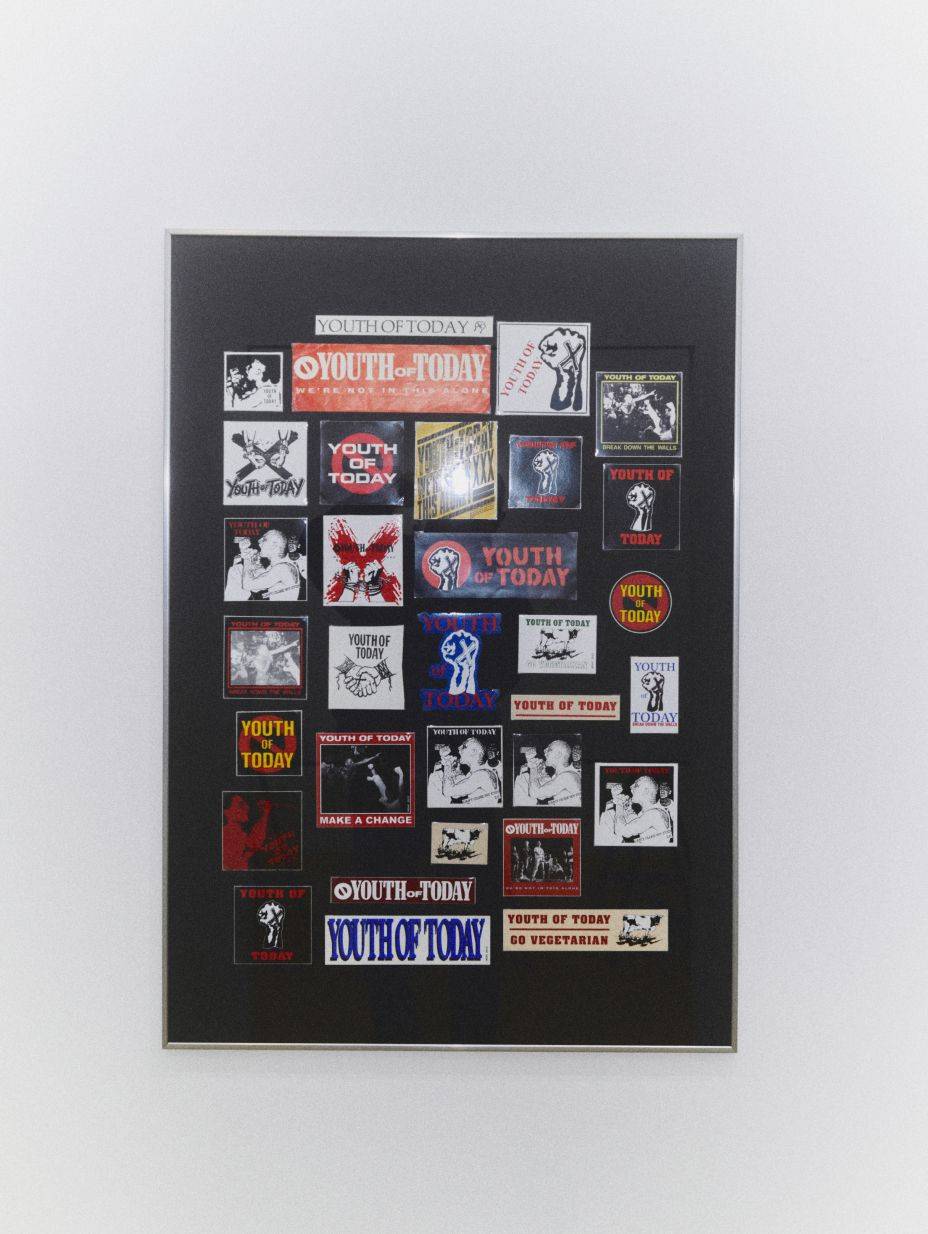
HC Sticker Threat II Exhibition ©Yves Mourtada
The ideology around the bands could be characterized as a 20th century version of Romanticism, with its paradoxical emphasis on chivalry, moral or “clean” living, and manners, and also an aesthetic of ritualized violence. Straight edge exalted the emotions of the protagonist especially in regards to relationships with friends, lovers, as well as enemies and institutions. The music and the manner in which it was performed was extremely physical, with heroic displays in the mosh pit and in stage diving. Drama was everywhere in this music, just as in Romantic classics such as Walter Scott’s “Ivanhoe.”

HC Sticker Threat II Exhibition ©Yves Mourtada
Not surprisingly, some of the most influential musicians from this very particular music cult are runners now, including Walter Schreifels, who played in straight edge hardcore legends “Youth of Today” and “Gorilla Biscuits” before forming the post hardcore band “Quicksand.”
What, ultimately, is the ethos of straight edge?
Youth of Today have a song that goes “Physically Strong, Morally Straight, Positive Youth – We are the Youth of Today.” It’s kind of funny, but I like all of those things.
“Physically strong”? No, we’re not on the football team…it means to carry health. You’re not straight edge just to not do what the other kids are doing; you’re adding to your thing. You’re taking care of your health: physically strong. “Morally straight” sounds a little harsh but the message is just be a good person. Treat people with respect. I think the message you’re supposed to gain from it is just be a good person. I mean, treat people with respect. There's a lot of this just shitty behavior like violence in the hardcore scene where people just don't have respect for each other. So “morally straight”; it's not just not smoking cigarettes, it's about behavior. And then “positive youth,” I guess that’s about just having a sort positive outlook on things, see the good in things. To see the good in people, to vibe on that. And then, I guess, “Youth of Today”; it's about youth.
Because when you’re young like…the oldest hip guy who knows everything about music can never go up against someone who's in their late teens or late twenties; because the youth really have the aesthetic of the future. They're in it, they're living it, they're following the narrative as it takes place. And they're a part of it in a way that you just can't be by observing it or not being on that wave. So I think youthfulness, and the fact that you have not fucked up –cuz life will throw all kinds of crazy choices at you, and you might zig when you should have zagged, you know what I mean? Whereas when you're coming out, you're pure, you haven't done those things. You didn't do the Chick-fil-A commercial yet. Because you needed the fucking money for your family or whatever choices that people make because they feel they have to. Life hasn't kicked your ass yet.
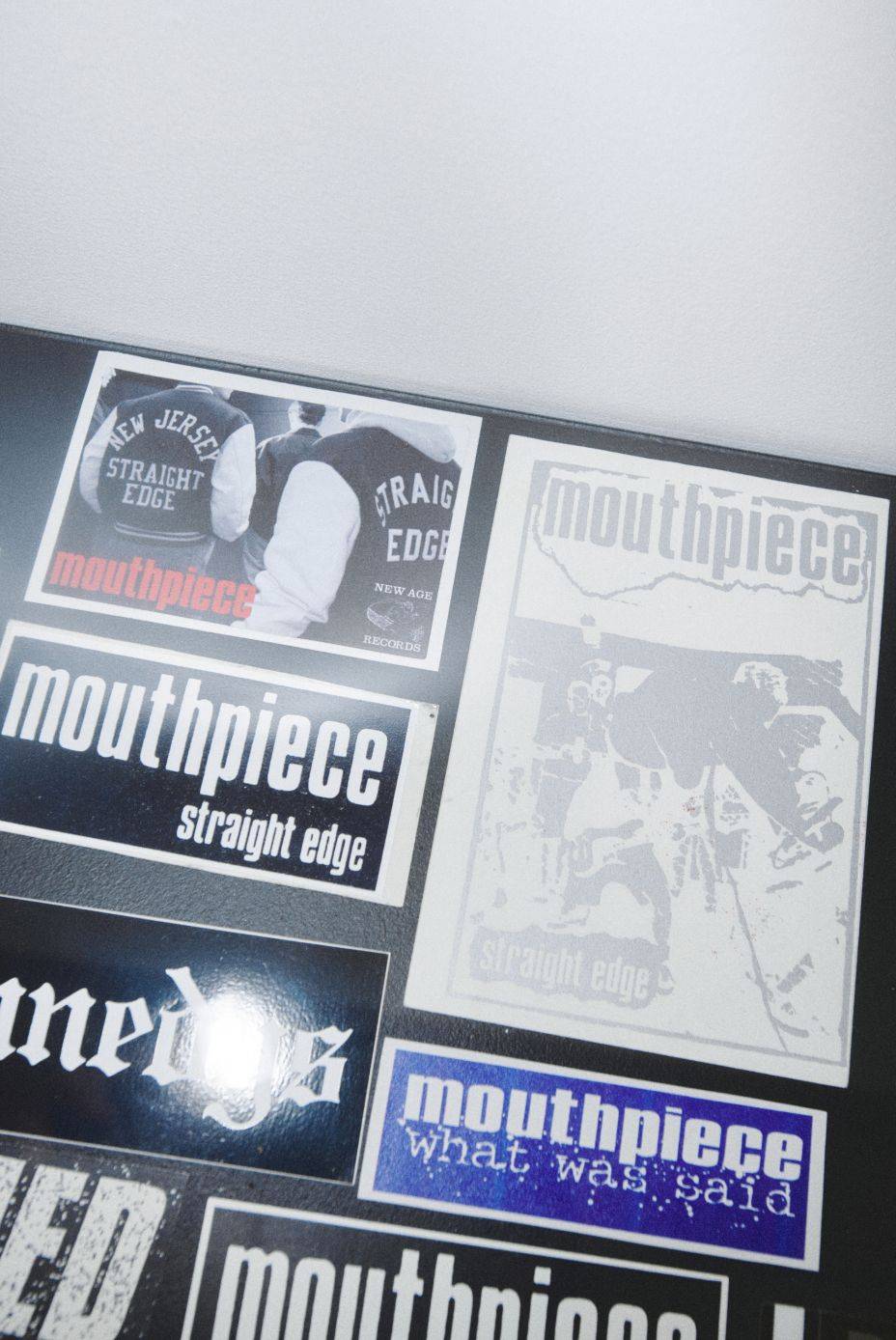
HC Sticker Threat II Exhibition ©Yves Mourtada
Did straight edge lead to running?
Yeah. I mean, I'm not thinking of my running in the context of straight edge. I'm not thinking I'm being straight edge, but I do see how it works well with that. Obviously we were talking, touching on that the pandemic created space for that kind of thing, and maybe put people in touch with the sort of meditative aspects of running. So running is a nice way to address that. For me it's, it's my meditation.
It's a way for me to be present. Similar to when you're playing a show, what I mean, how you're present when you're playing a show. I feel present when I'm running. And so I like that about it too. I'm not taking calls generally if I'm listening to something, I'm focused on it. I love that kind of separation of mind and body where your body's just going, but your mind can just be at rest. And I think that's just, there's the high, that's just a real thing. It's very much an antidepressant and the times we live in are super depressing and the state of the world, how the world's being reported to us, puts us in a weakened state.
So if you can just get out, you don't have to go to the fucking gym, you don't have to join anything. You could be anywhere, put on your shoes and go out and see a lot of cities. I live in New York, so I'm seeing people all the time and I interacting with human beings. But a lot of people don't have that opportunity. So running, you can at least interact with your environment. Find nature, be a part of that. And it's just good for you on, obviously on a physical plane, on a spiritual plane.
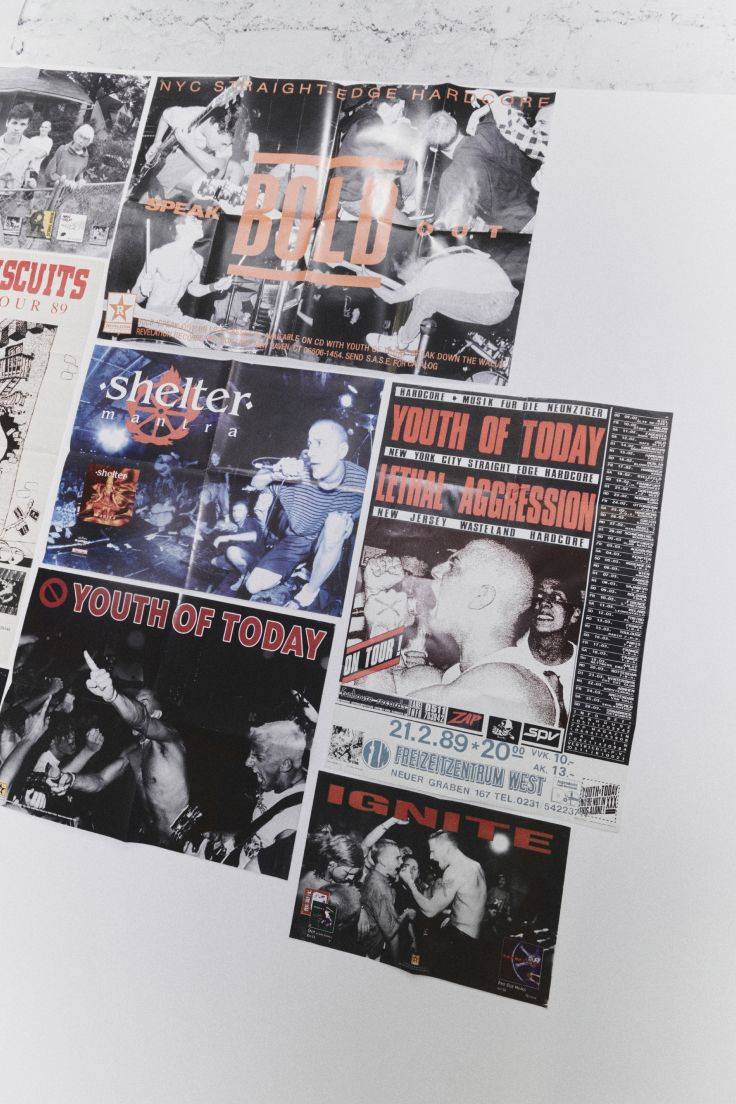
HC Sticker Threat II Exhibition ©Yves Mourtada
And you can take those lessons that you learned as a youth; what I got through being a part of this straight edge movement, bands from 7 Seconds through Fugazi, that kind of stuff has informed my entire life. I still have access to that straight edge kid inside of me. You know what I mean? I can check in with that part of me and make better calls and make calls that I feel like are authentic to me and my values. The kind of things that I wanna represent. And I think those simple slogans, they're effective and simple. And slogans get in people's heads. It's ideology.
Also the fact that vegetarianism was brought into it, vegetarianism is political. Because it connects to environment and factory farming, and the meat industry stuff is reflective of other political things. It takes you into that realm. Of course I love animals; everyone loves animals of course, but to make an active choice brings you into another category. It doesn’t make you a better person but it puts you in touch with other things. So running, taking care of your health, it makes sense that a lot of straight edge people are into running.
I guess with Ian (Mackaye, of Minor Threat & Fugazi) and the straight edge thing, I think it's pretty amazing that he had this insignia and put this idea out for people…there's a sort vulnerable bridge I think, when you're a teenager, where you can make some really bad choices quickly and set yourself on a more difficult path with some of the decisions and the crowd you run with in that vulnerable time. And that Ian, with “Straight Edge” and through his awesome songwriting, by putting this idea out there, giving it a name & giving it an insignia, challenged the whole system of why I was getting into punk, which I thought was about “we're gonna spit and be bad and obnoxious and we're gonna wear clothes that are gonna upset people” and that whole thing, which was totally appealing. But the straight edge thing was a challenge to that.
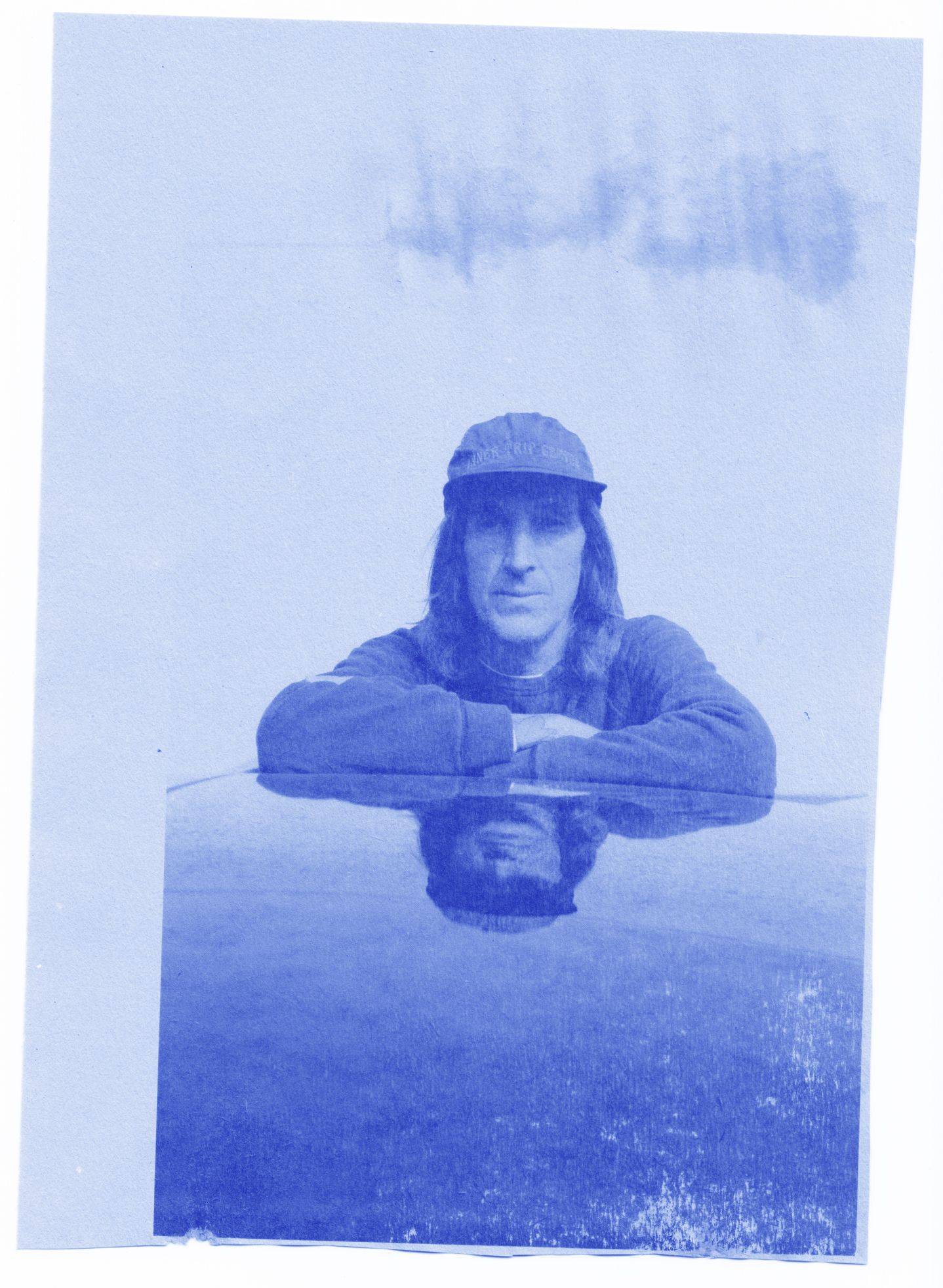
Sam Velde ©Curtis Buchanan

I have a long history of being close to straight edge culture…
I wouldn’t have gotten deeply into punk —and then eventually hardcore music— if it wasn’t for Pat Dyson who played in Uniform Choice during the “Screaming for Change” era; he really kind of fathered me into punk, gave me a lot of records. Uniform Choice who were one of the first outwardly “we’re a straight edge” bands in California... They’re historically known as the “first of five”...first of five straight edge bands in California; like the first straight edge band in the state of Washington state was Brotherhood. We can do this now, we can trace the genealogy. They were a merch band. They sort of created the blueprint that the Connecticut / NY kids would use (i.e. for merch & T-shirts); the Youth of Today and those guys…
In its history, its culture, Southern California is a very big part of that; the Youth of Today, the Uniform Choice T-shirts; that were stolen from “America’s Hardcore” (California band) in regards to the design...and then here comes Youth Crew…y’know? This is the birth of it; we all know Ian Mackaye and the Minor Threat and the song; we’re all versed in that. But who really brought that in / popularized it? Its Youth Crew. Youth of Today, Bold, Uniform Choice, it’s the West Coast stuff. They codified it. So you have Minor Threat, SS Decontrol, the Boston stuff and then…here come the kids; cos those early bands were getting older and then here comes the kids who say “we don’t drink, we don’t smoke, we don’t fuck”; then comes the vegetarian thing…there’s a line in the song “No More” where Youth of Today say: “We’re gonna build a more conscious, caring society; are you with me?” So a truly hardcore lifestyle comes into play. That’s a hardcore lifestyle. And I’m very close to that. That’s a part of the community that I’m part of.
Growing up in Southern California, going to punk shows in the ‘80s, the shows were really violent; you had gangs; the Suicidals, Mercs, LA Death Squad, you had La Mirada punks, it was very insane. I would go to the Fenders Ballroom shows and find a place to hide. I would hide and then when the band was up you would come out and find a spot to watch the band and then go hide again because there were random acts of violence, you would just get beat up.
And then the straight edge bands came and it was about building things up; it was about fixing things and building things. It’s an identity thing. It’s gone through these phases and people still identify with it. People base their whole lives on it It’s pretty interesting.
Youth of Today were so powerful; almost in a phenomenon way...you can’t discount that they were really good players, you can’t discount that they wrote great songs... “Oi!” comes from glam, comes from pub rock…Youth of Today just sped that up. But they also brought this idea, this consciousness...they made jocks; not dick jocks but these other kinds of jocks. And yeah, it was infectious because it was good! They changed everything… They were right on time… Ian Mackaye said “I’m out of step with the world” He meant “I don’t want to be in step.”
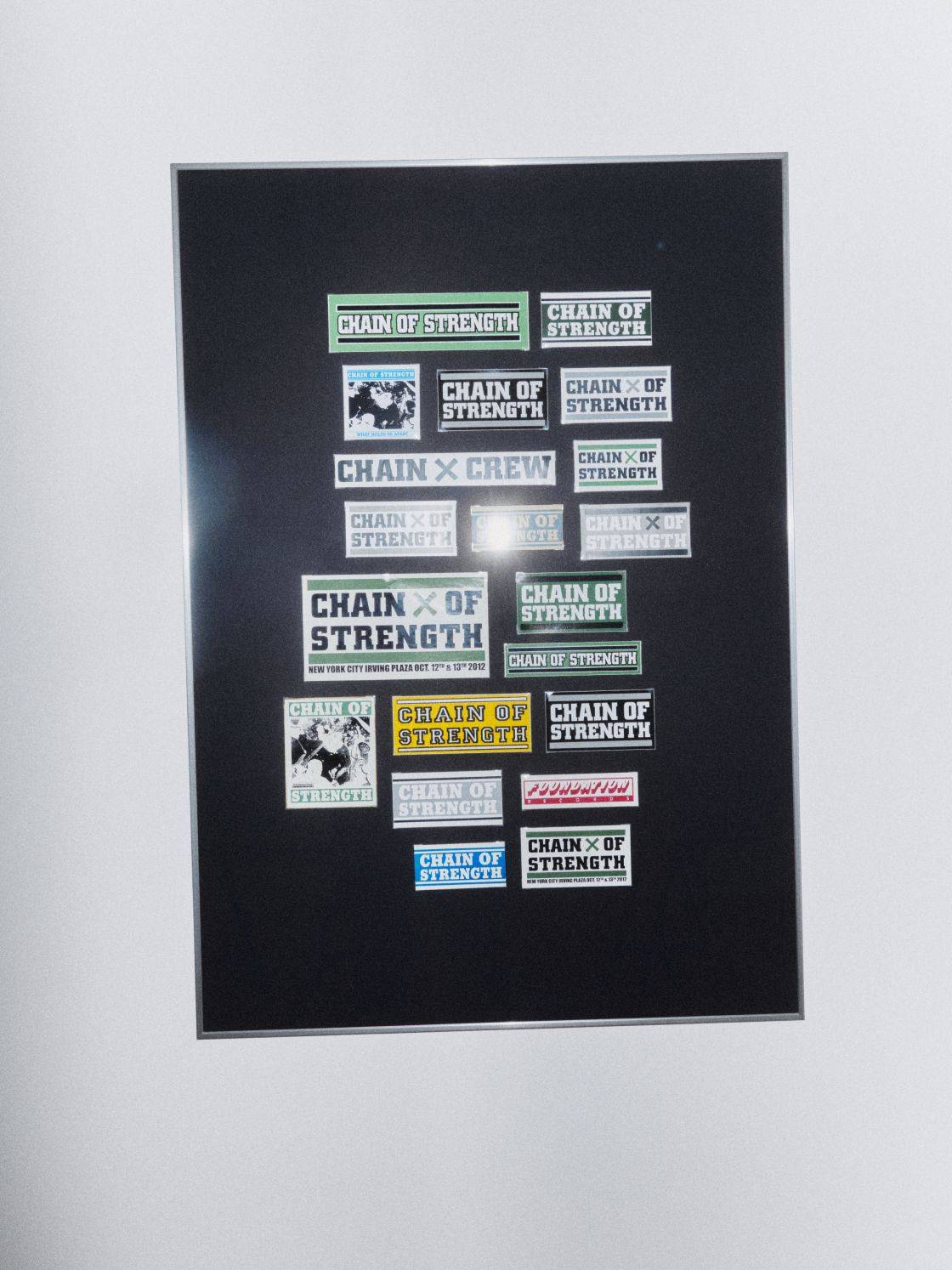
HC Sticker Threat II Exhibition ©Yves Mourtada
As far as people being upset about QR codes, etc; your shit’s been sold a million times; you’re not gonna win. The only way you fight back in any society is how you spend your money. Research where you put your money. Research what you put in your body. Read some ingredients. Education…don’t give your money to shitty things; that’s all you’ve got.
I run, climb, I hike, I backpack I cycle. I got into centuries –100 mile rides– I got into “through hikes,” I climbed Mt. Windy in one day; it took me 14 and a half hours. I’m happiest when I have time to do that stuff.
These’s something about exercising and aggressive music too…that’s a thing. People gravitate toward aggressive music when it comes to exercise. No one really runs to Joni Mitchell...they run to Slayer. No one does squats and deadlifting to Leonard Cohen. There’s no person in the history of the world that really does that.
I might do some intense aerobics to Rihanna but that’s upbeat.
There’s a deep connection to that and straight edge and hardcore…that promoted a healthy lifestyle.
Youth of Today have a song called “Wake Up and Live”...just like Bob Marley who also says “Wake up and live now”; I think of that kind of philosophy.
I’m sober. I’m four years sober. I think about being healthy all the time. I’m obsessed with it. If there’s an addiction aspect to it, its a good addiction.
During the height of the apocalypse or whatever you want to call it, I would hike 5 miles a day. I would do a 50 mile bike ride out to the beach. I go to the climbing gym and climb. It’s very hard on your body.
I do all that. I’m a supplement guy, a smoothie guy, I’m always learning what food is and I’m a person who listens to hardcore every day. As well as a million other things.
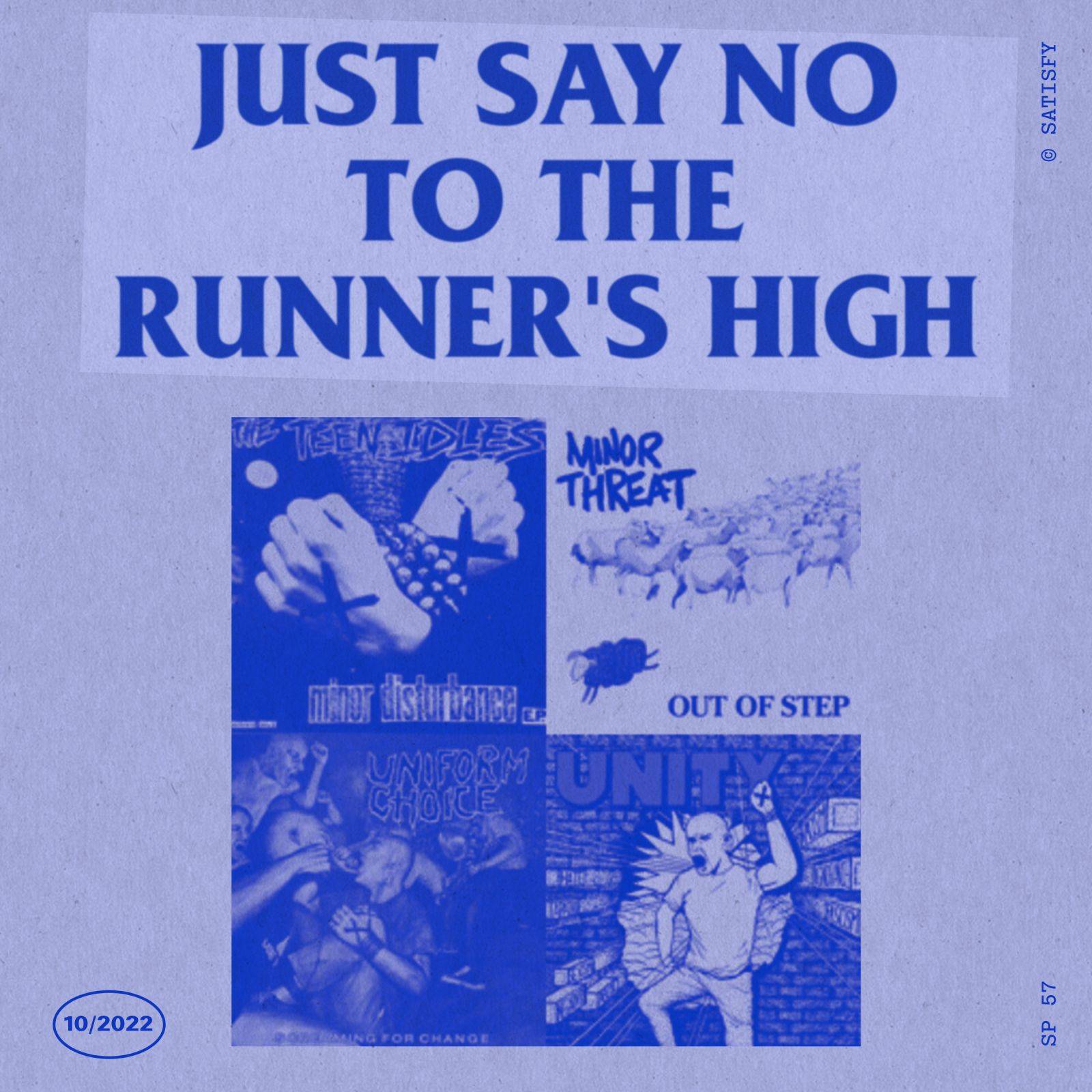

Editor-in-Chief: Ian F. Svenonius
Artwork and Layout: Jaakko Suomalainen
© POSSESSED MAGAZINE
